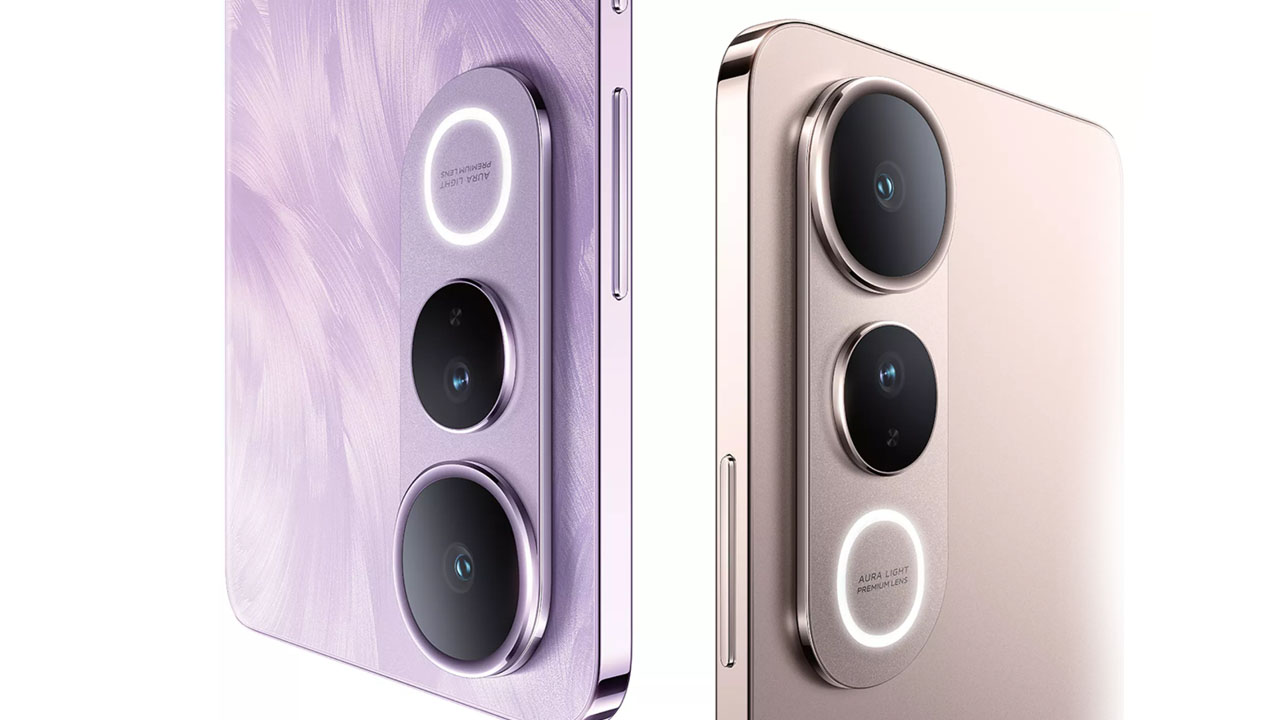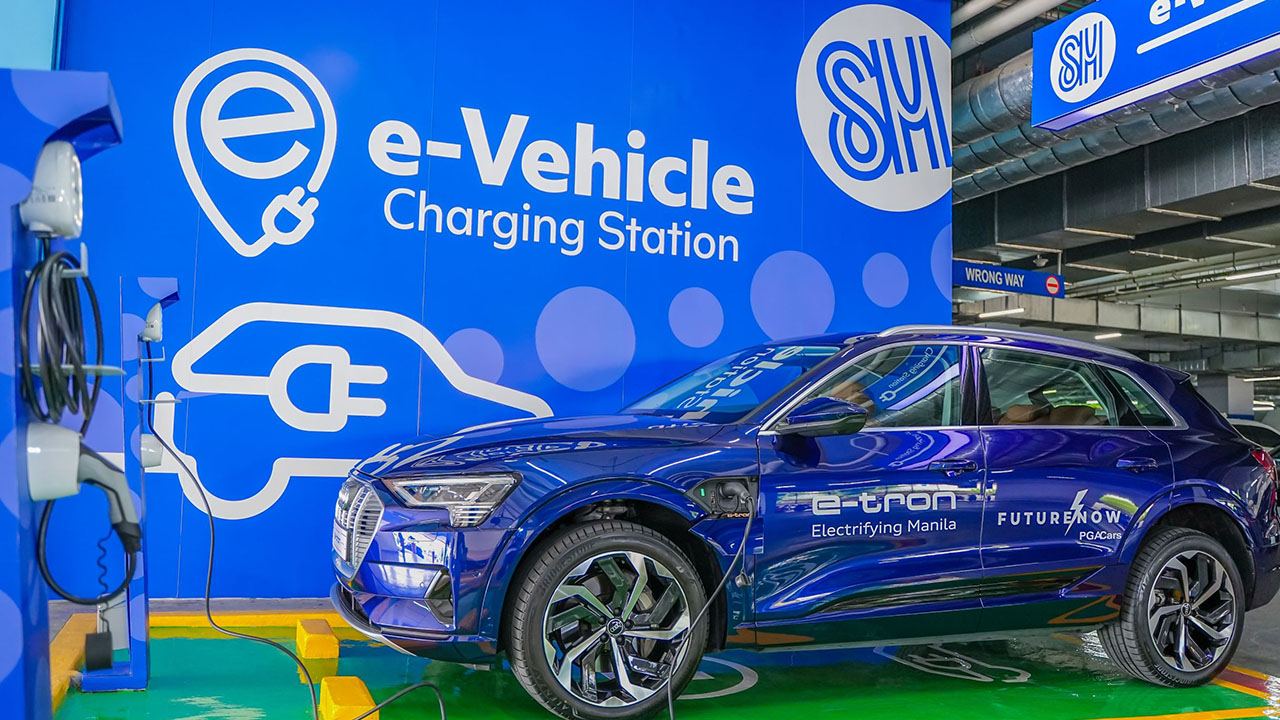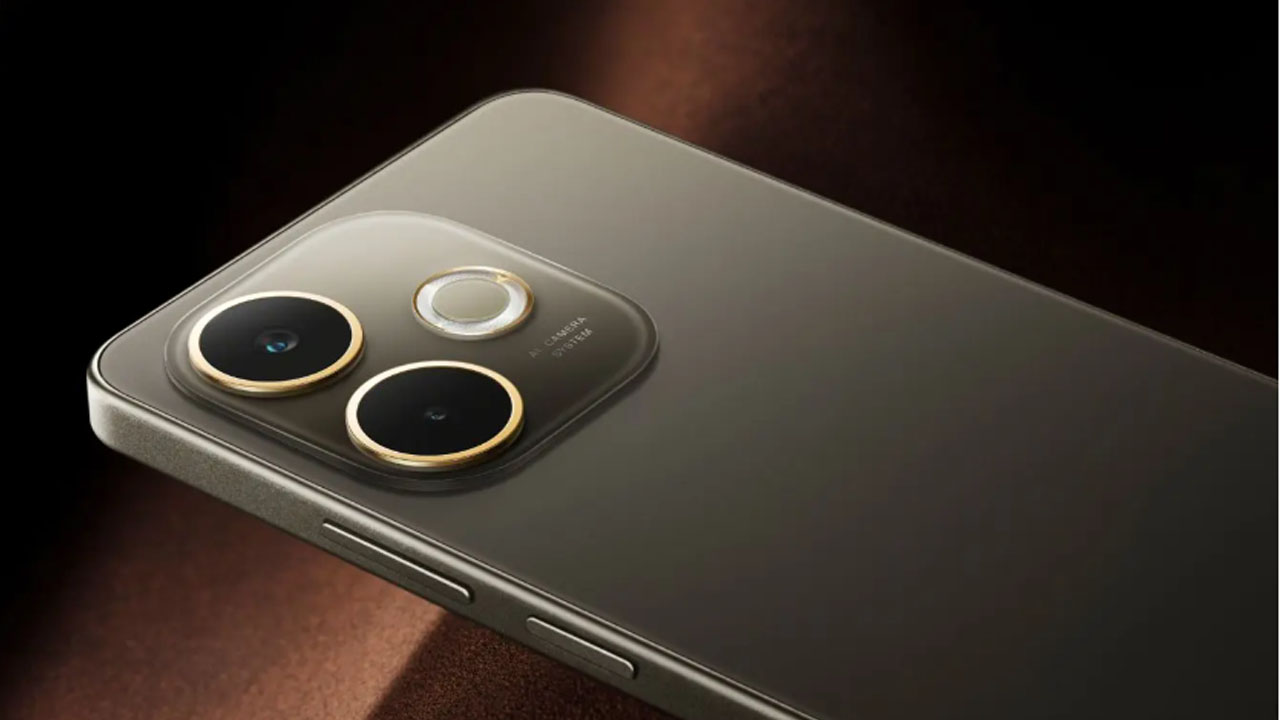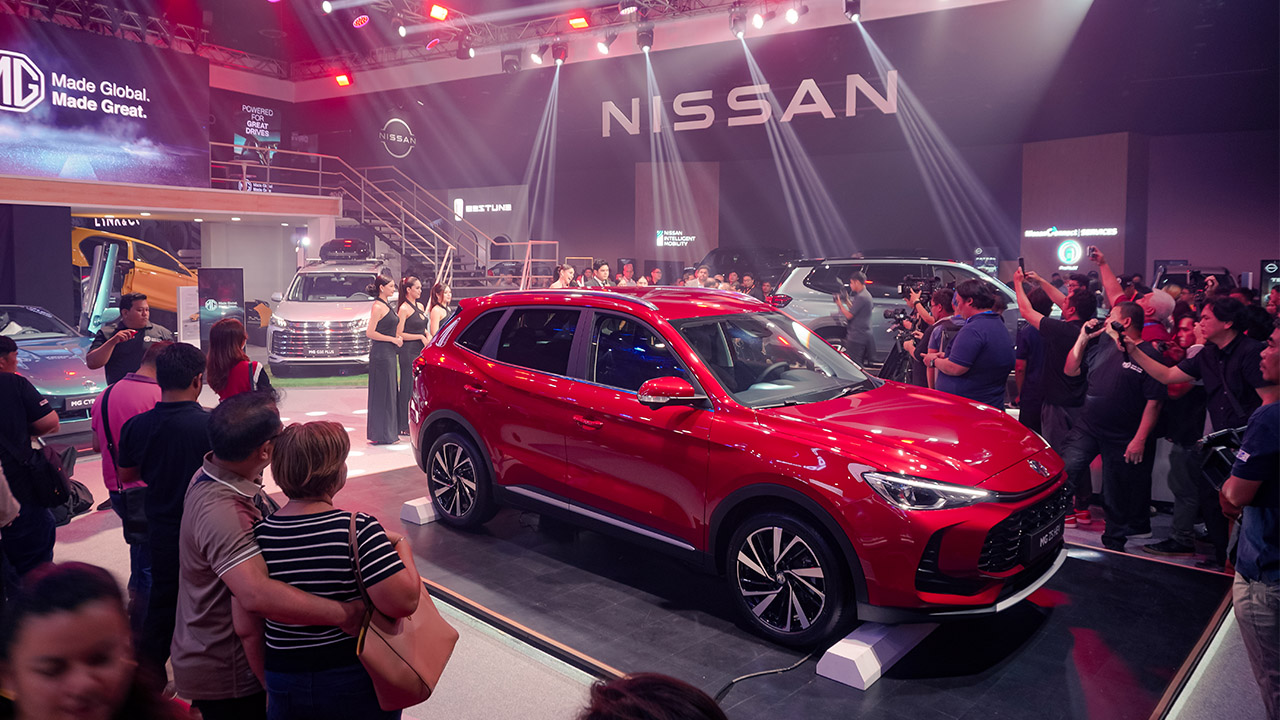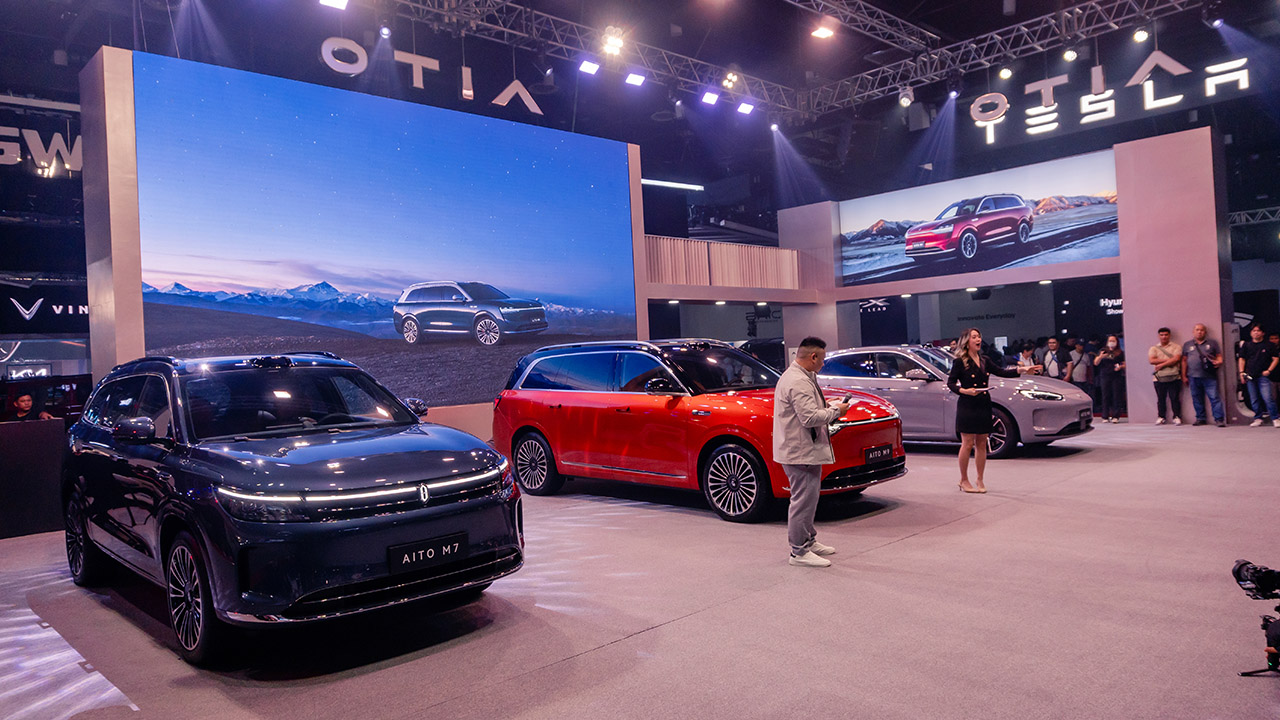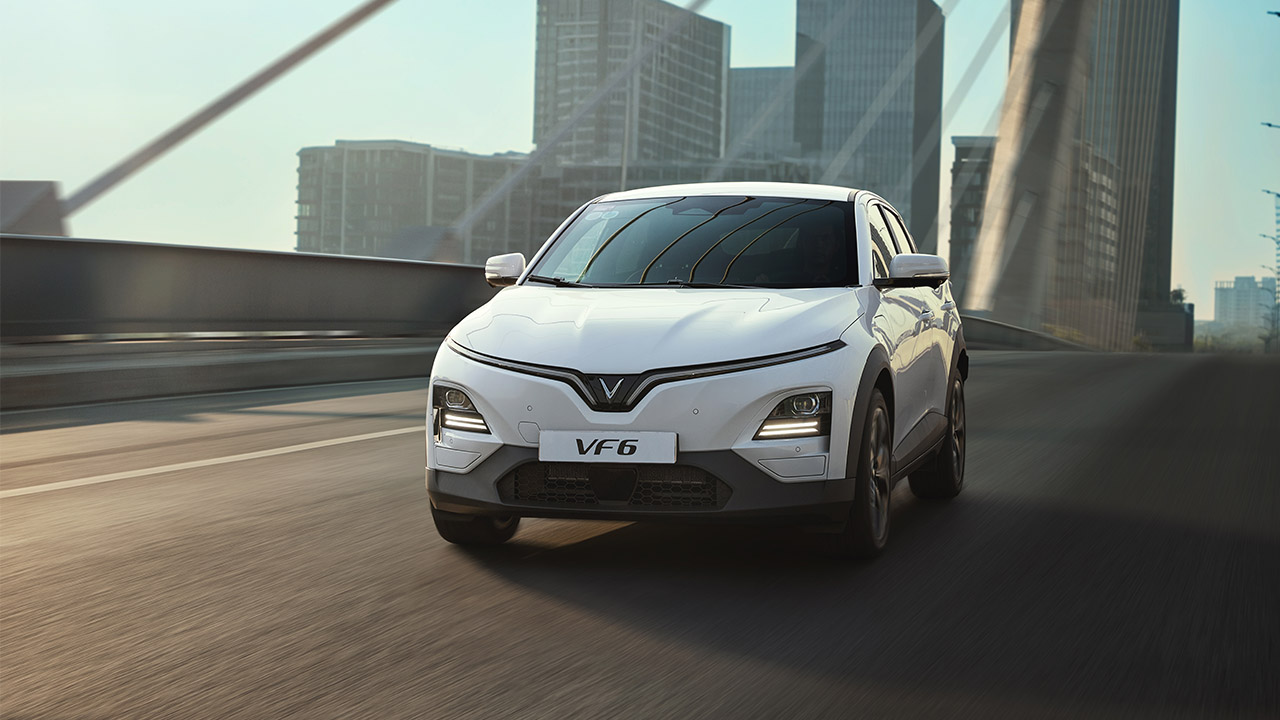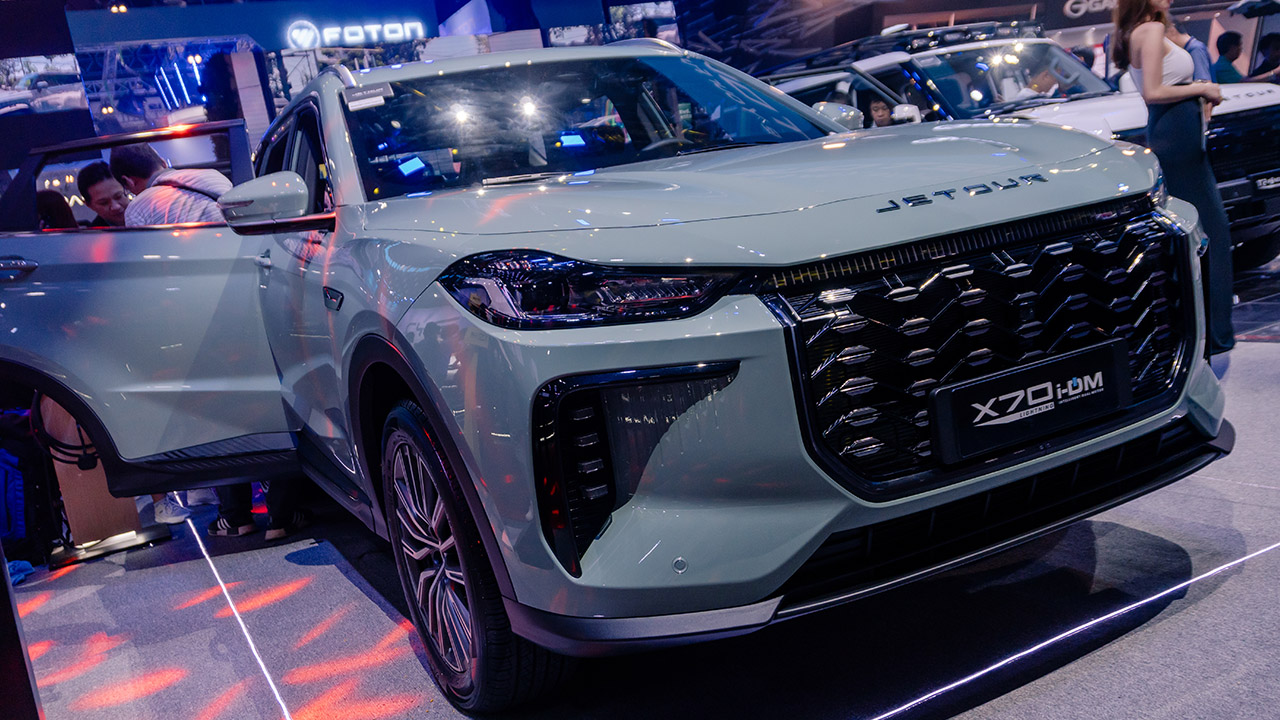A hybrid-electric vehicle integrates electric motors with an engine, optimizing fuel economy by efficiently utilizing both power sources. Honda shares that its e:HEV hybrid-electric system combines existing engine and electrification technologies with new advancements, achieving notably high fuel efficiency and an enhanced driving experience.
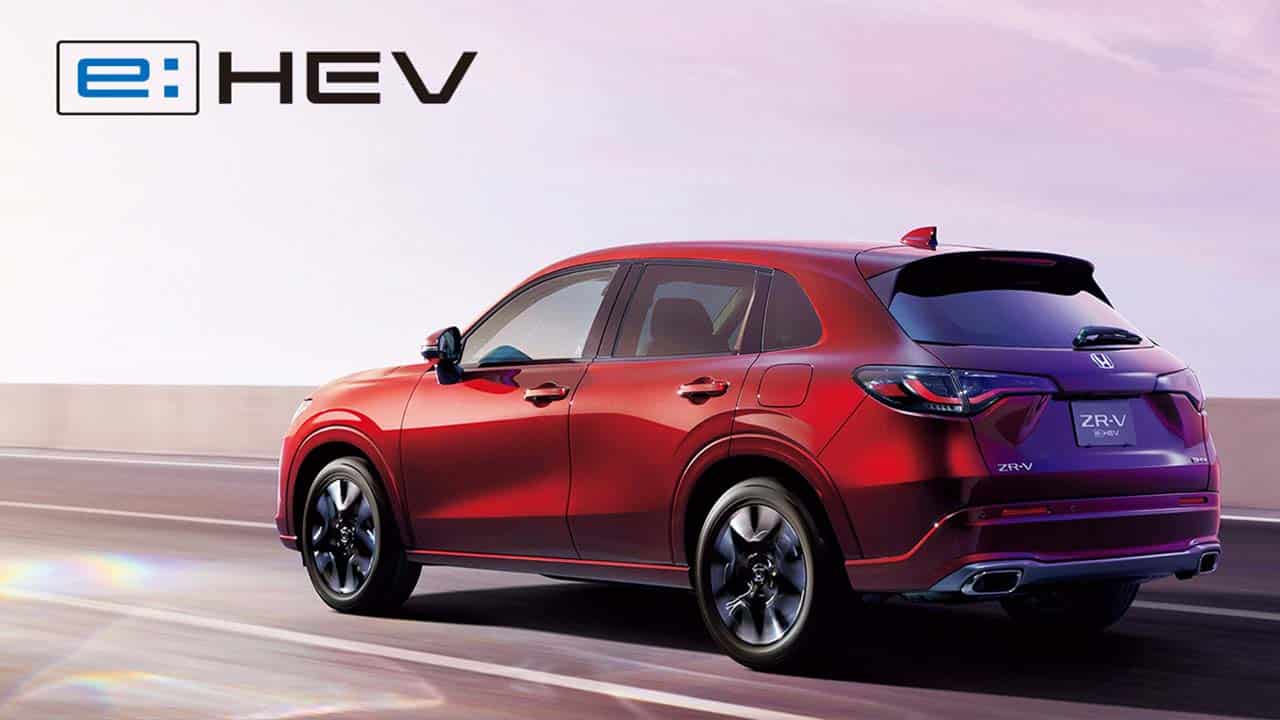
In the e:HEV system, the electric motor propels the vehicle across the entire speed range, while the internal combustion engine (ICE) engages solely during high-speed cruising. This distinctive approach balances high environmental performance with the unique driving enjoyment characteristic of the e:HEV, an experience not attainable with an ICE-only system.
To maximize the benefits of both motors and engines, the e:HEV system intelligently adapts to different driving conditions. In low- to mid-speed ranges, where electric motors excel, the system operates similarly to a series hybrid. Conversely, during high-speed cruising, where engines perform optimally, the e:HEV functions as a parallel hybrid. This dual-mode strategy sets the e:HEV apart as an intelligent hybrid system exclusive to Honda.
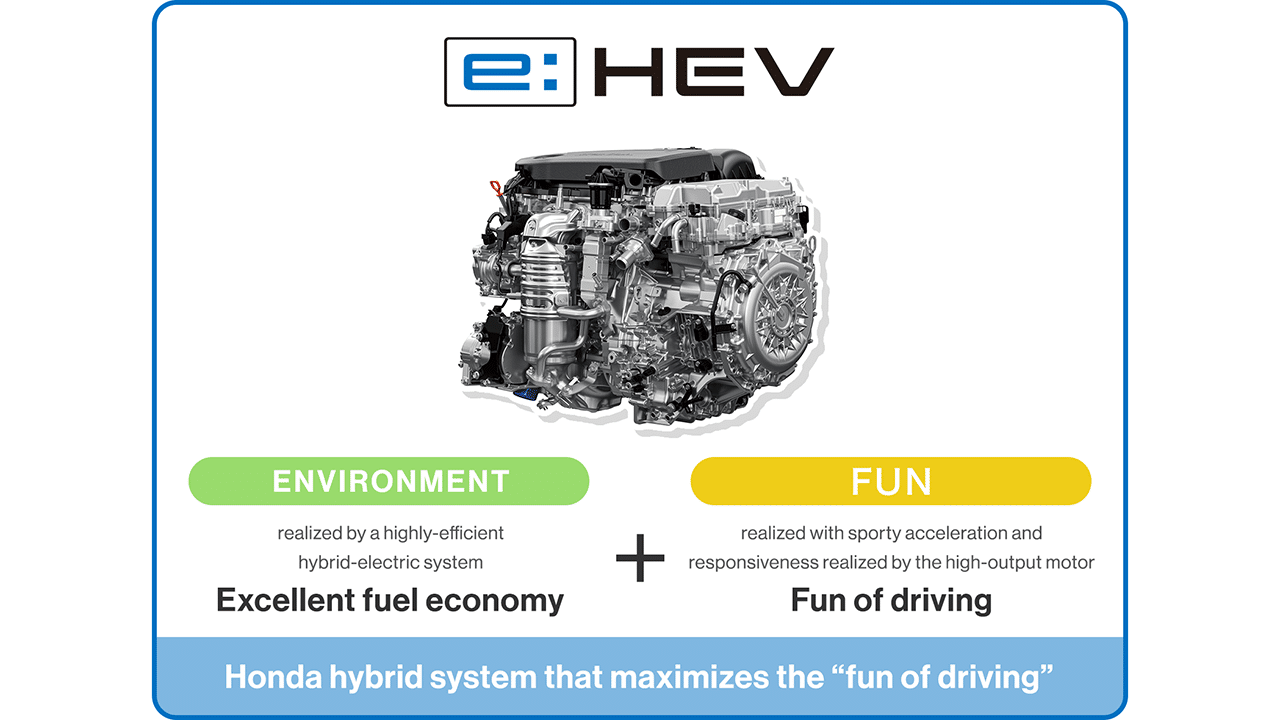
Distinguishing itself from series-parallel hybrid systems, the e:HEV prioritizes efficient motor drive for daily driving situations. It features two distinct modes – EV drive mode and Hybrid drive mode – each offering high-quality motor driving and efficiency without the complexity of intricate power distribution mechanisms.
The two-motor hybrid-electric system, a key component of the e:HEV, comprises a traction motor and a generator motor. These motors efficiently convert engine output into electricity, supply power to the tires, and regenerate electricity during deceleration. The simplicity of this system, without complex mechanisms for mixing battery/engine power or transmission, ensures highly efficient and smooth driving, minimizing frictional losses.
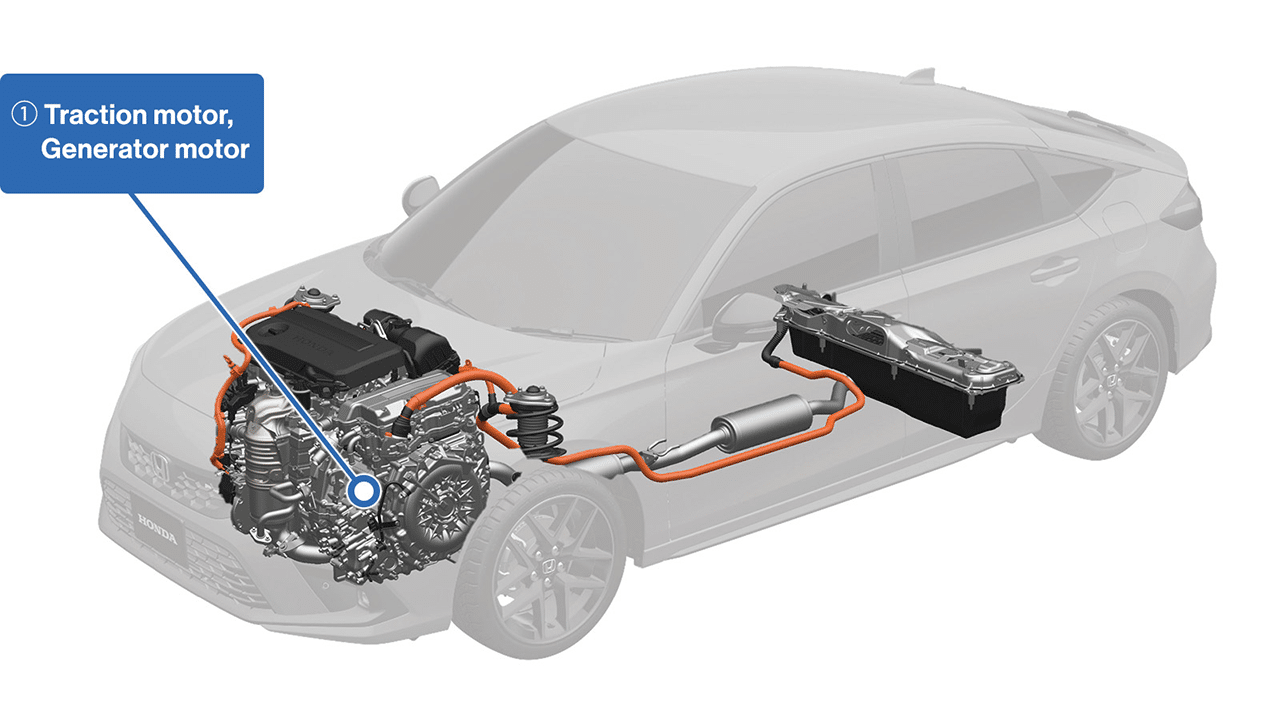
Maintaining high efficiency across varied driving scenarios, the e:HEV intelligently switches between three modes:
1. EV drive mode: During startup acceleration and city driving, the vehicle relies solely on the motor, powered by battery electricity. The engine remains off, providing a smooth, gasoline-free driving experience.
2. Hybrid drive mode: The vehicle operates on the motor using electricity generated by the engine, achieving powerful acceleration with a balanced and linear feel.
3. Engine drive mode: During high-speed cruising, where less driving force is required, the engine drive mode proves more efficient than running the motor at high speed. Directly connecting the engine output to the driveshaft minimizes power loss.

Additionally, the e:HEV employs regenerative braking in EV drive mode, converting kinetic energy into electricity during deceleration or downhill driving, further enhancing its efficiency.
It’s interesting how far car manufacturers have come in terms of minimizing carbon footprint of our vehicles. While the road to 100% electric vehicles is still a far reach, we can at least already see the horizon and the kind of future it holds for a greener mobility solution. If you want to learn more about the details of Honda’s Two-Motor Hybrid System, you may check the full article published by Honda.

